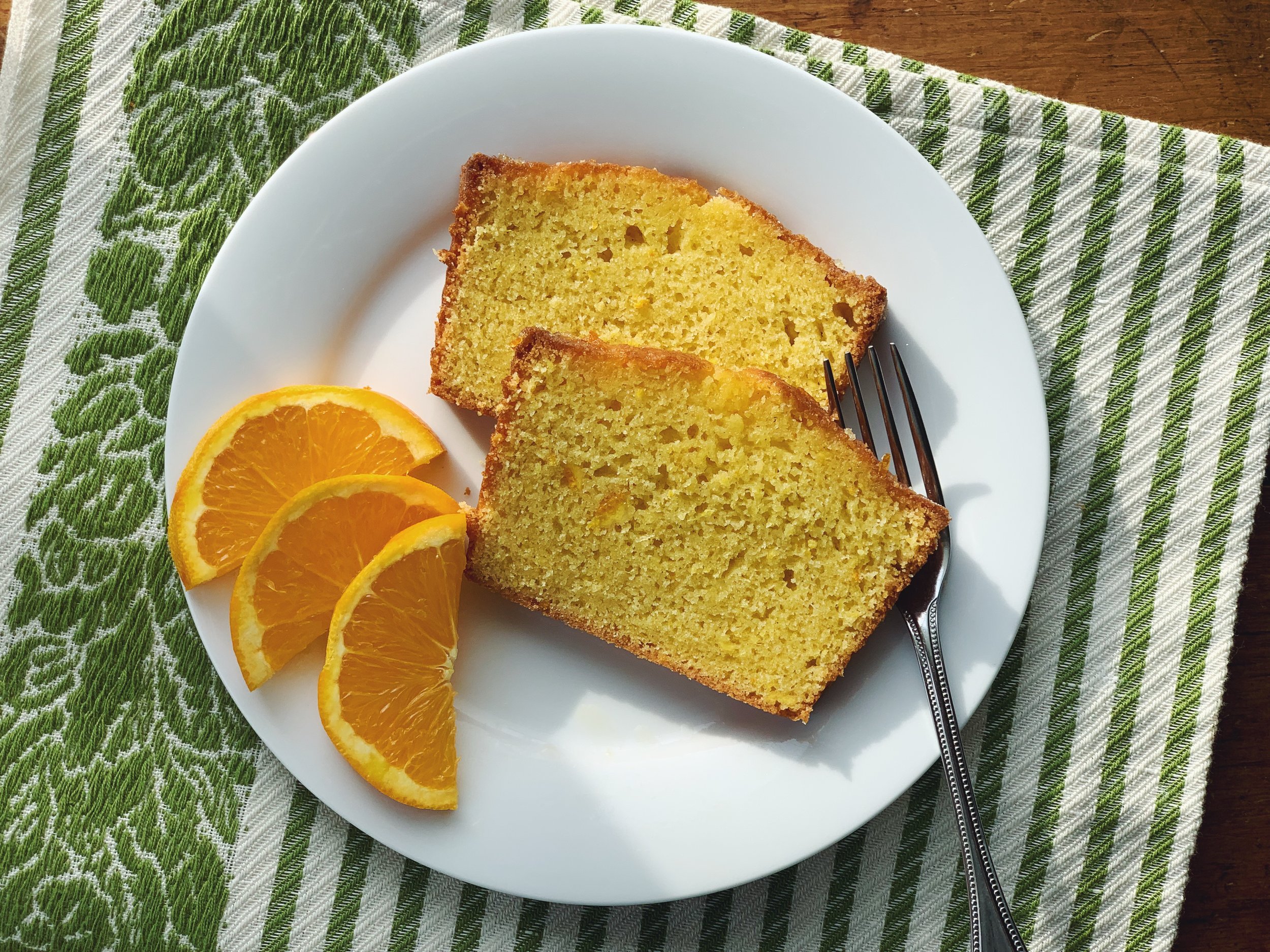Pan d'Arancio, a Sicilian Snacking Cake
This is a plain cake, which is not to say it doesn’t deliver; it does. What’s particularly notable is that this recipe, which comes from Sicily (land of citrus!), calls for puréeing an entire orange, skin and all (minus seeds), and mixing it into the batter. It’s different, by the way, from the famous Claudia Roden version, in which oranges are boiled whole, until soft, and then puréed and added to cake batter. Here the orange is raw, and so it loses non of its sharp tang or freshness. You might think raw orange pulp would make the cake bitter, or overpowering. But no; this cake is fragrant and tender and sweet. It’s brushed, while still warm, with orange glaze, which gives it a lovely, sticky top, and a honey-like shine.
Makes 1 loaf cake, to serve 8-10
INGREDIENTS
For the cake:
1 thin-skinned, unwaxed navel or other seedless orange, about 200 g (7 oz)
250 g (1 1/4 cups) sugar
3 large eggs, at room temperature
1/2 teaspoon pure vanilla extract
200 g (1 1/2 cups plus 1 tablespoon) unbleached all-purpose flour
50 g (1/2 cup) almond flour
8 g (2 teaspoons) baking powder
2 g (1/4 teaspoon) fine salt
100 g (about 1/3 cup) whole milk, at room temperature
100 g (7 tablespoons plus 1 teaspoon) unsalted butter, melted and cooled slightly (use the remaining knob of butter to coat the baking pan)
For the glaze:
1 navel orange
100 g (1/2 cup) sugar
INSTRUCTIONS
1. Heat the oven to 350° F (180° C). Cut the orange (skin and all) into quarters; cut each quarter crosswise into thin wedges. Put all the pieces into the pitcher of a blender (this is a good time to use your Vitamix if you have one). Process until the orange is completely puréed. Scoop the purée into a bowl and set aside.
2. Combine the sugar and eggs in the bowl of a stand mixer fitted with the whisk attachment. Beat on low to break up the eggs, then increase the speed to high and beat for several minutes, until the mixture is pale, light, and fluffy. Beat in the vanilla extract.
3. Whisk together the dry ingredients—flour, almond flour, baking powder and salt. Add half the flour mixture to the stand mixer and beat on medium-low just to incorporate it. Beat in the milk and orange puree, and then the rest of the dry ingredients.
4. In a bowl, mix about 1 cup of the batter with the melted and cooled butter, mixing vigorously to emulsify the two together. Scoop this back into the stand mixer and use a silicon spatula to fold everything together gently but thoroughly.
5. Butter and flour an 8 1/2 by 4 1/20-inch loaf pan. Scrape the batter into the pan and smooth out the top. Bake for 40 to 50 minutes, until a cake tester inserted into the center of the cake comes out clean, with just a crumb or two clinging to it. Keep your eye on the cake as it bakes; if the top is browned before the center is fully cooked, lay a piece of tented foil over the top to prevent over-browning. Don’t worry if the cake doesn’t rise tremendously; it’s not meant to.
6. Transfer the cake to a rack to cool for 20 to 30 minutes before removing it from the pan.
7. Make the glaze while the cake is cooling: Zest the orange with one of those cocktail zesters and reserve the zest. Squeeze the orange and measure out 60 g (1/4 cup) juice (you can drink the rest). Combine the juice, zest, and sugar in a small, heavy-bottomed pot and heat on medium low, stirring to dissolve the sugar. When it’s dissolved, raise the heat to medium-high and bring to a boil. Boil for 3 or 4 minutes, until thickened to a syrup.
8. Use a pastry brush to brush the surface of the warm cake with glaze. I like to glaze it generously, to create a thick shiny surface strewn with pieces of (now candied) zest. Let the cake cool to room temperature before slicing and serving.

